Grizzly Bears
Black Bear or Grizzly Bear It would be nice to distinguish by size and colour, but around here, both species come in a variety of colours and sizes. However, the Grizzly Bear has a prominent shoulder hump, which the Black Bear lacks, and a more concave facial profile. A guide to appearance is offered by Bear Smart.
Although there are two ursine species around the Lake (and across much of B.C.)—the Grizzly Bear and the Black Bear—they are only rarely to be confused.
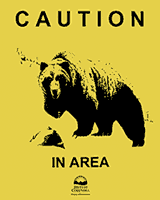 A sign, I take seriously.
A sign, I take seriously.
The Black Bear is numerous and often seen in the valleys; the Grizzly Bear is less common and mainly seen on high ground.
While in most seasons, Grizzly Bears are found in the high country, they are partial to spawning fish and so in the fall will scour streams in the valley bottoms. The pictures, below, show grizzlies foraging both in streams and on land.
As the bear ages, the tips of some of its fur turns whitish. Indeed, that is the origin of the name: its fur becomes grizzled, that is streaked with grey. This also gives rise to another name for the older Grizzly: a silver tip.
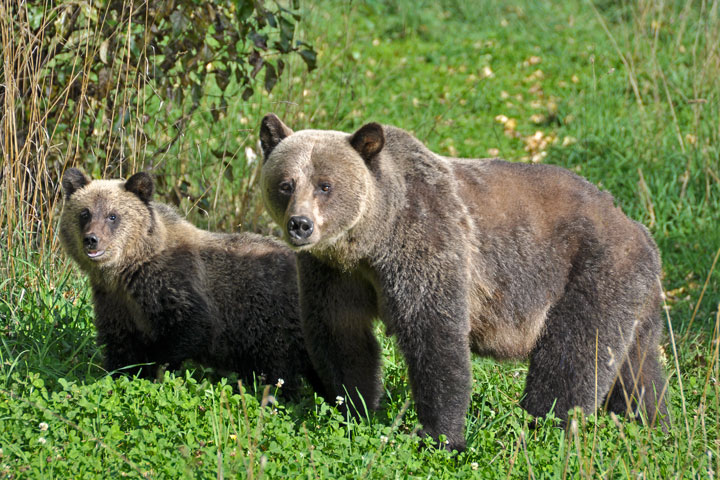 A Grizzly sow and a cub were foregoing in a field. They paused briefly to decide whether the photographer posed a threat.
A Grizzly sow and a cub were foregoing in a field. They paused briefly to decide whether the photographer posed a threat.
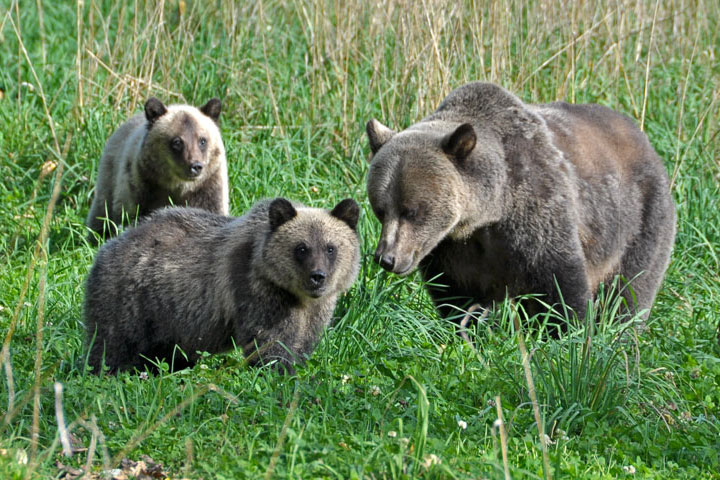 The sow with both of its cubs.
The sow with both of its cubs.
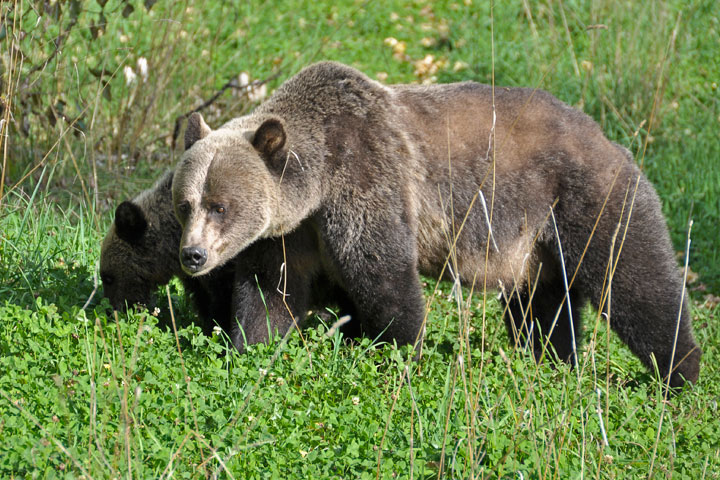 One of the cubs always stayed very close by its mother.
One of the cubs always stayed very close by its mother.
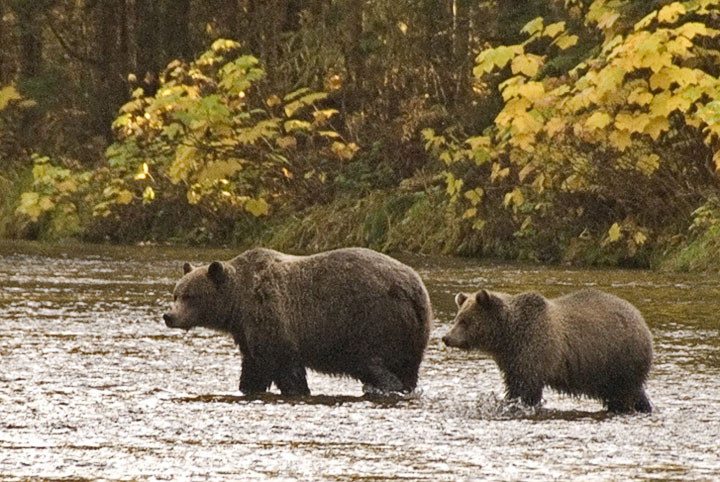 The massive body and prominent shoulder hump (muscles for the forelegs) clearly reveals this to be a Grizzly Bear. Undoubtedly the bear on the left is a sow and the one on the right is one of this year’s brood.
The massive body and prominent shoulder hump (muscles for the forelegs) clearly reveals this to be a Grizzly Bear. Undoubtedly the bear on the left is a sow and the one on the right is one of this year’s brood.
 It is October and this Grizzly cub is eating a fish it has picked out of a spawning creek.
It is October and this Grizzly cub is eating a fish it has picked out of a spawning creek.
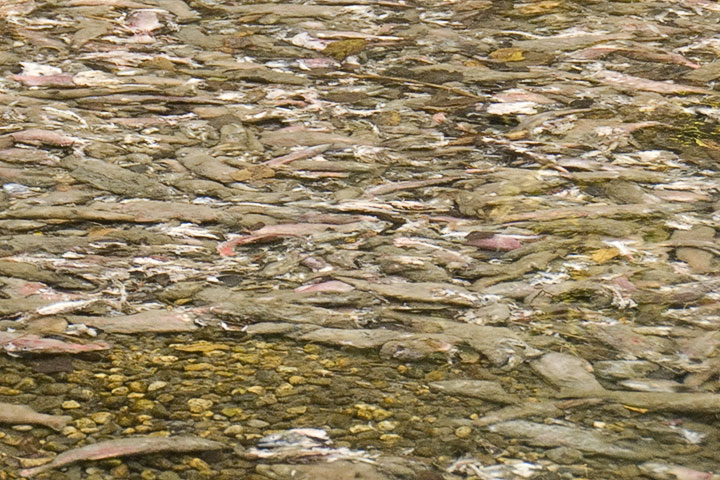 After the bears left the scene, I went to see what they had been eating: dead Kokanee (after spawning, the Kokanee die). The stench was strong—it was protein, but was it palatable?
After the bears left the scene, I went to see what they had been eating: dead Kokanee (after spawning, the Kokanee die). The stench was strong—it was protein, but was it palatable?
 The Grizzly sow (facing the camera) and its three cubs are in a spawning channel. The cubs will have been born during last winter’s hibernation. They will stay with their mother through the coming winter and will then be driven off—at which point, the sow mates again.
The Grizzly sow (facing the camera) and its three cubs are in a spawning channel. The cubs will have been born during last winter’s hibernation. They will stay with their mother through the coming winter and will then be driven off—at which point, the sow mates again.
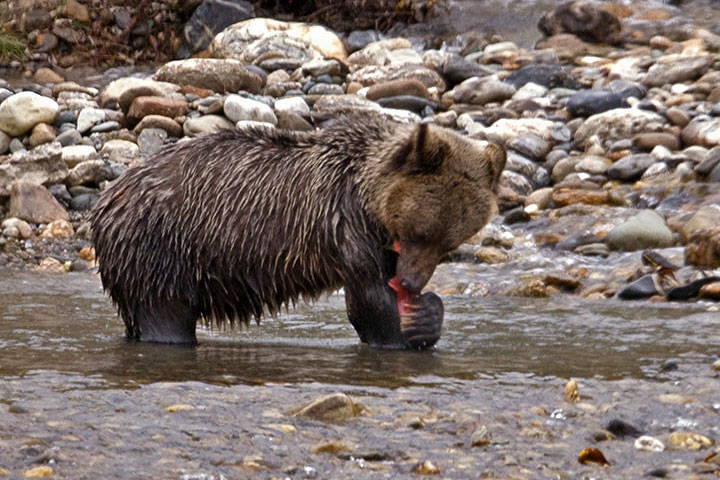 Bears cannot grasp an object the way a raccoon can. To hold a fish, this small Grizzly Bear presses it between its paw and its other leg.
Bears cannot grasp an object the way a raccoon can. To hold a fish, this small Grizzly Bear presses it between its paw and its other leg. Catherine Aitken
Catherine Aitken
 A large silver tip heads into the stream in search of Kokanee.
A large silver tip heads into the stream in search of Kokanee.
 Catherine Aitken
Catherine Aitken
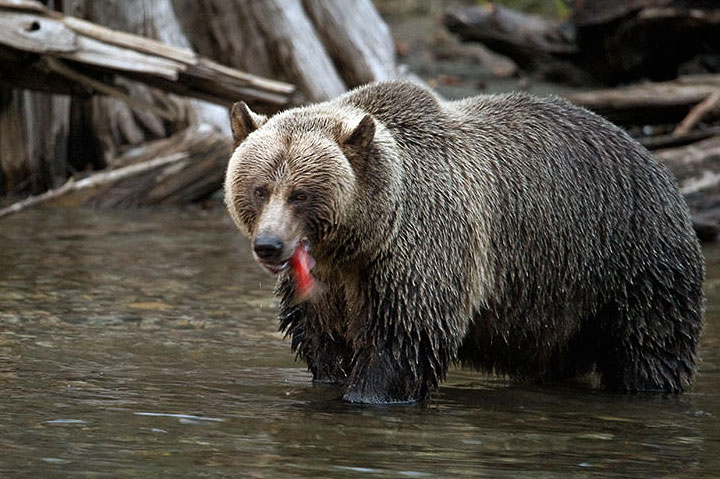 The silver tip has caught a Kokanee and eats it headfirst.
The silver tip has caught a Kokanee and eats it headfirst.  Catherine Aitken
Catherine Aitken
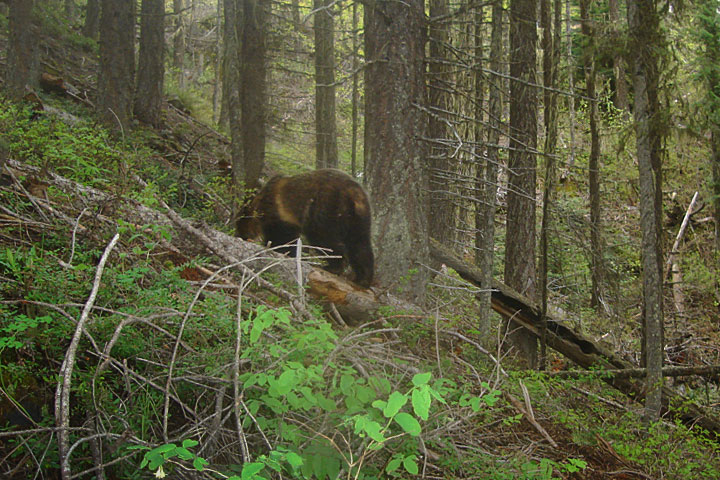 Photographing a grizzly scarfing fish in the fall is no easy task, but harder still is recording one in the mountains earlier in the the year. This May picture is in the mountains just south of Nelson.
Photographing a grizzly scarfing fish in the fall is no easy task, but harder still is recording one in the mountains earlier in the the year. This May picture is in the mountains just south of Nelson.
 Taken in the same area as the picture on the left, the bear also looks as though it is the same grizzly.
Taken in the same area as the picture on the left, the bear also looks as though it is the same grizzly. Doug Thorburn
Doug Thorburn
Information from BC Ministry of the Environment: Grizzly Bears in BC.
![]()